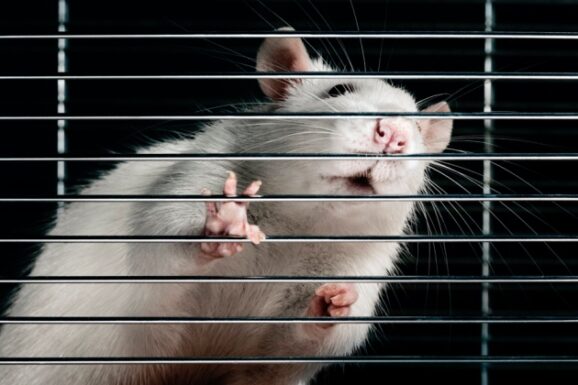PTSD Linked To Genetic Markers In Rats
This article is more than 2 years old
 Research published a few months ago indicates that trauma symptoms may be hereditary, passed to offspring via sperm. Now, a new study published in the Proceedings of the National Academy of Sciences suggests that rats’ susceptibility to post-traumatic stress disorder (PTSD) may also be determined by specific genetic markers.
Research published a few months ago indicates that trauma symptoms may be hereditary, passed to offspring via sperm. Now, a new study published in the Proceedings of the National Academy of Sciences suggests that rats’ susceptibility to post-traumatic stress disorder (PTSD) may also be determined by specific genetic markers.
It’s always been a bit of a mystery why some people experience PTSD after a traumatic event, while others don’t. Chalking it up to a person’s sensitivity isn’t all that helpful, and doesn’t explain the variation in responses or severity. It could have to do with a person’s specific brain chemistry, or other intangibles that dictate how individuals process and react to events, but given that PTSD is an actual diagnosable disorder, rather than a simple reaction, scientists thought there might be more to it.
Nikolas Daskalakis, a neuro-endocrinologist at New York’s Icahn School of Medicine at Mount Sinai, wanted to stage a study that examines post-traumatic stress in rats, but he wanted to design the study differently from those that preceded it. Instead of using small electrical shocks, which is the conventional way of inducing pain or trauma in rats, he wanted a subtler approach, as shocks are fairly intense and are used to create a wide schism between those rodents who have been shocked and those who haven’t. So he came up with another catalyst—soiled cat litter. While you might think that would induce trauma in just about anyone, it’s different for rats. They’re not averse to the ammonia, or to the cleanup. What they smell is a well-established predator, which triggers a fear response they experience in nature.
In the study, Daskalakis put 100 rats within close proximity of the used litter, and then measured their trauma responses one week later. 25% of the rats responded in an “extreme” way, with exaggerated responses and a high level of anxiety. Another 25% responded minimally, and were measured to have anxiety levels similar to those in rats who never came into contact with the litter.
Next, researchers wanted to try and figure out why there was such a wide range of responses to the same trauma. Using DNA microarray technology, they examined samples from the blood and brain containing 22,000 genes. In both sexes, researchers found expressive changes in 86-334 genes linked to the rats that responded minimally or extremely. Generally, the genes either corresponded to minimal or maximal responses, rather than both, leading Daskalakis to believe that those dictated the trauma response, and that the balance of the two systems might be what ultimately leads to each rat’s specific response to trauma.
The study supported previous studies that identified glucocorticoid receptors as part of the cause of PTSD (generally, the receptors have a low level of activity in people with the disorder). The researchers found that 73 transcription factors regulate the expression of the genes they isolated, and that 25% of those are linked to the glucocorticoid receptor. This provides some direction for PTSD treatment, especially given that injecting rats with corticosterone, a glucocorticoid hormone released during stressful experiences, eased their effects to the trauma when measured one week later. Perhaps DARPA can use some of this as they develop brain implants for PTSD, though one can only hope they don’t use soiled cat litter for their trials. Virtual reality has also been used as an effective treatment for PTSD, especially for war veterans, though not on a genetic level. Perhaps we’ll see a combined treatment approach in the future.












